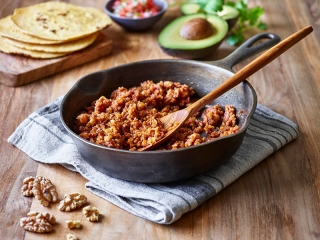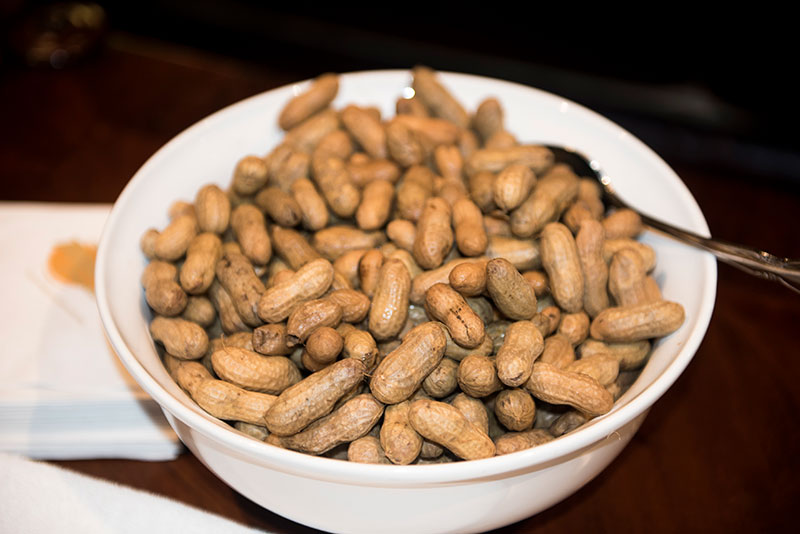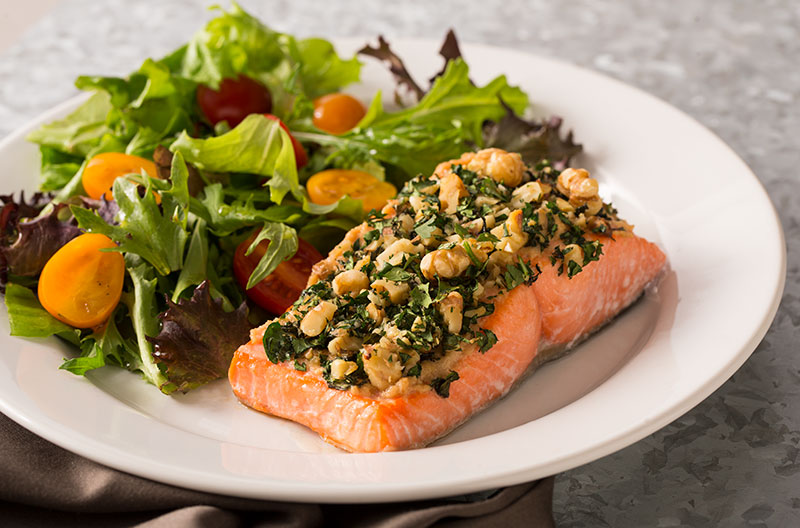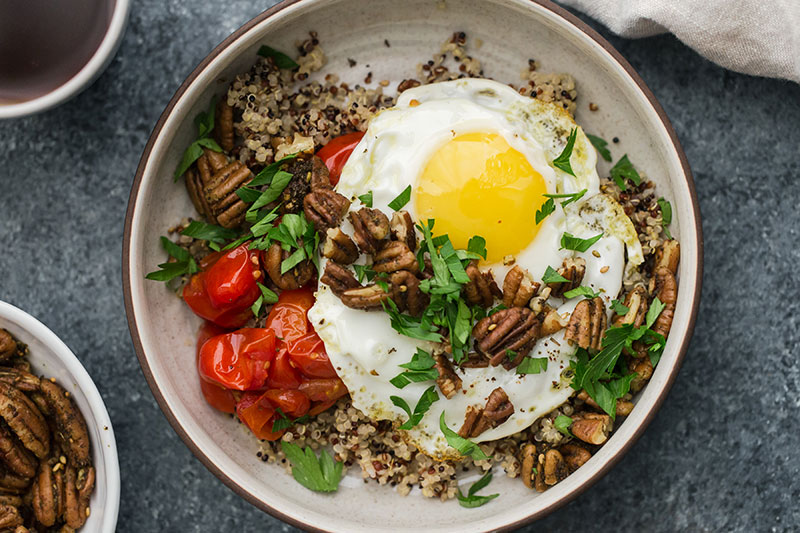
Are You Nuts?
05 November 2019Plant-forward applications utilizing nuts from a southern-style boiled peanut hummus to dairy-free walnut cream to pecan meal as a flavorful coating.
By Lisa Parrish, GMC Editor
Nuts are versatile and nutritious and make great additions to whole grains, salads and vegetables. Although some instructors associate pecans with pie and peanuts with jelly, there are more adventurous ways to incorporate nuts into today’s culinary trends.
Instructors can update their curriculum to include plant-forward, gluten-free applications that use nuts as a meat replacer for ground beef or pork or perhaps swapping a gluten breading for a ground nut meal, such as pecans or walnuts.
Continue focusing on global cuisines in culinary teaching kitchens by including Asian satay sauces that pair sweet, spicy and peanut flavors and can be used on noodles, vegetables or other proteins.
Storage Do’s and Don’ts
No matter the nut choice, make sure to store the products correctly. Due to nuts’ naturally occurring oils, they all should be stored in an air-tight container in the refrigerator or freezer and not the pantry. Also, make sure to follow these additional guidelines:
- Store away from foods with strong odors, like cabbage and onions
- Rotate inventory. Practice FIFO – First In, First Out
- For storage up to six months: refrigerate at 0°C (32°F) to 5°C (41°F) at 65 percent relative humidity
- For storage longer than six months, freeze at -18°C (0°F)
Go nuts and click through for more information on peanuts, walnuts and pecans.

Peanuts: Popular legume served from US ballparks to restaurants in Asia

Walnuts: Beyond desserts to meat and dairy alternatives

